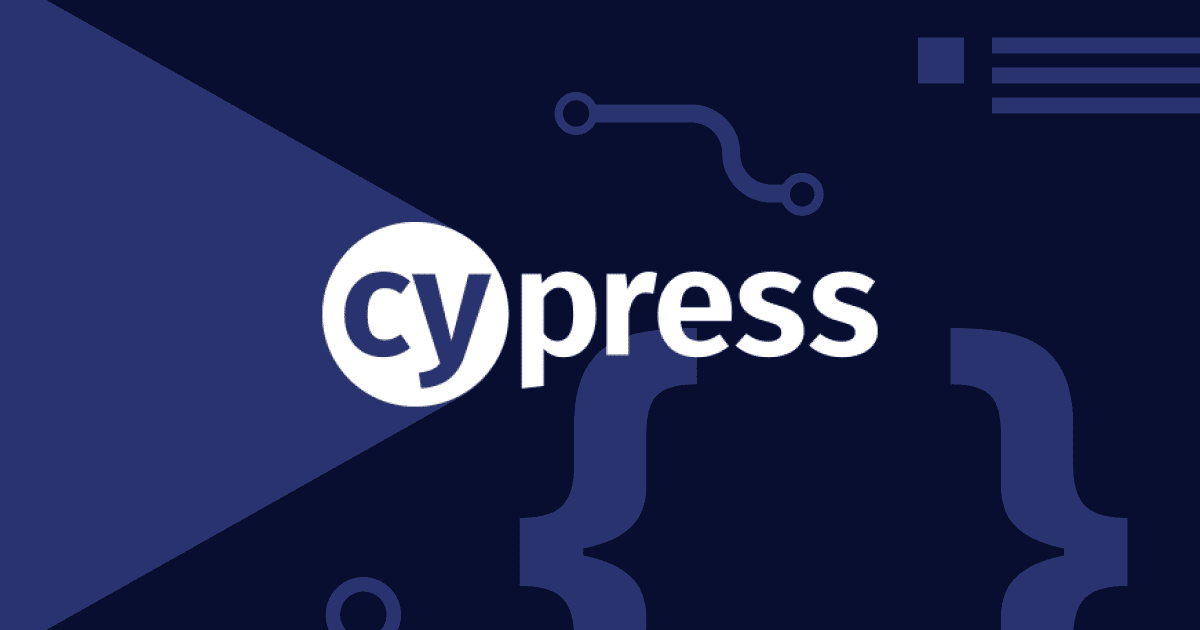Building a Strong Foundational Framework for API Testing: Best Practices and Key Insights
 Md. Abdullah Al Mamun
Md. Abdullah Al Mamun
In the fast-evolving world of software development, API testing plays a crucial role in ensuring that applications run smoothly and efficiently. Cypress, a popular end-to-end testing framework, is increasingly adopted for API testing due to its simplicity, speed, and rich ecosystem. This blog will explore the basics of setting up an API test framework with Cypress, delve into best practices, and provide a sample code structure to kickstart your journey.
Introduction: API testing involves validating the functionality, performance, and reliability of APIs that serve as the backbone of modern applications. Cypress is best known for UI testing but shines equally in API testing, thanks to its ability to run tests quickly and its robust JavaScript-based tooling.
A well-structured API test framework in Cypress ensures:
Scalable test development
Improved debugging capabilities
Integration with CI/CD pipelines for continuous feedback
Let’s dive into building a strong foundation for your Cypress API testing.
API Test framework setup basics: In this section, we will discuss setting up the test framework and some basics to understand the process properly. Additionally, there will be a step-by-step guide with some sample codes to make things easier for all!
Install Cypress
Start by installing Cypress into your project:npm install cypress --save-devOrganize Project Structure
Create a clear directory structure for your API tests. For example:
/cypress
/integration
/api
- sampleTests.cy.js
/support
- commands.js
/fixtures
- sampleData.json
- ids.json
- userdata.json
- Configure Environment Variables
Add sensitive information, like base URLs and API keys, in thecypress.config.jsor.envfile:
env: {
baseUrl: 'https://api.example.com',
apiKey: 'your-api-key'
}
Organize API Endpoints
Keeping all API endpoints in a centralized location makes tests more maintainable and reduces the chances of hardcoding URLs in individual test files.
File:
cypress/support/apiEndpoints.json
export const API_ENDPOINTS = {
LOGIN: "/api/users/login",
USERS: "/api/users",
USER: "/api/users/{id}",
LOGOUT: "/api/users/logout",
DETAILS: "/api/dash/clients",
};
Usage of base URL and API endpoints in tests
In your test files, import
API_ENDPOINTSto use the predefined routes.File:
cypress/integration/api/userTests.cy.js
import { API_ENDPOINTS } from '../../support/apiEndpoints';
describe('User API Tests', () => {
const baseUrl = Cypress.env('baseUrl'); // Mount the base URL in a variable
it('Should create a new user', () => {
cy.fixture('userdata').then((requestBody) => {
cy.request({
method: 'POST',
url: `${baseUrl}/${API_ENDPOINTS.USERS}`,
body: requestBody,
headers: {
'Content-Type': 'application/json',
Authorization: `Bearer ${Cypress.env('apiKey')}`
}
}).then((response) => {
expect(response.status).to.eq(201);
});
});
});
it('Verify if a user can login', () => {
cy.fixture('userdata').then((requestBody) => {
cy.request({
method: 'POST',
url: `${baseUrl}/${API_ENDPOINTS.LOGIN}`,
body: requestBody,
headers: {
'Content-Type': 'application/json',
Authorization: `Bearer ${Cypress.env('apiKey')}`
}
}).then((response) => {
expect(response.status).to.eq(200);
});
});
});
});
Explanations:
In the code snippet, only two API endpoints are used. i.e. USERS and LOGIN. The rest of the mentioned variables in API_ENDPOINTS can be used similarly.
Also, the baseUrl is used to mount the cypress env variable and is used later in all tests.
Parameterize Endpoints
When API endpoints include dynamic segments like id, use fixture data to fetch id and replace it with the variable:
import { API_ENDPOINTS } from '../../support/apiEndpoints';
describe('User API Tests', () => {
it('Should create a new user', () => {
cy.fixture('ids').then((ids) => {
cy.request({
method: 'GET',
url: `${Cypress.env('baseUrl')}/${API_ENDPOINTS.USER}/${ids.client_id}`,
headers: {
'Content-Type': 'application/json',
Authorization: `Bearer ${Cypress.env('apiKey')}`
}
}).then((response) => {
expect(response.status).to.eq(200);
});
});
});
});
Sample Code Structure to Start On
A clear and well-organized code structure is crucial for writing maintainable API tests in Cypress. To help beginners get started, let's break this section into small steps, with sample code and detailed explanations.
Step 1: Setting Up Test Data
Test data is often stored in JSON files inside the cypress/fixtures folder. This allows you to reuse and manage data efficiently across multiple tests.
File: cypress/fixtures/sampleData.json
{
"name": "John Doe",
"email": "john.doe@example.com",
"password": "securePassword123"
}
Explanation:
This file contains sample data to create a new user. The fields name, email, and password mimic the payload for an API request. Keeping data in fixtures ensures you can easily update or scale the test data.
Step 2: Adding Reusable Commands
Reusable commands help reduce redundancy in your tests. They are defined in cypress/support/commands.js.
File: cypress/support/commands.js
Cypress.Commands.add('createUser', () => {
const baseUrl = Cypress.env('baseUrl'); // Assign baseUrl to a variable
cy.fixture('userdata').then((userData) => {
cy.request({
method: 'POST',
url: `${baseUrl}/${API_ENDPOINTS.USERS}`, // Use the baseUrl variable
body: userData,
headers: {
'Content-Type': 'application/json',
Authorization: `Bearer ${Cypress.env('apiKey')}`
}
}).then((response) => {
expect(response.status).to.eq(201); // Validate that the user is created successfully
Cypress.env('userId', response.body.id); // Save the created user's ID for later use
});
});
});
Cypress.Commands.add('getUser', () => {
const baseUrl = Cypress.env('baseUrl'); // Assign baseUrl to a variable
cy.fixture('userdata').then(() => {
cy.request({
method: 'GET',
url: `${baseUrl}/${API_ENDPOINTS.USER}`, // Use the baseUrl variable
headers: {
Authorization: `Bearer ${Cypress.env('apiKey')}`
}
});
});
});
Explanation:
createUser: Sends a POST request to create a new user and stores the user ID in Cypress's environment for use in subsequent tests.getUser: Retrieves a user's details based on their user ID.
These commands encapsulate the request logic, making the test files cleaner and easier to read.
Step 3: Writing Test Cases
Let's write test cases that use reusable commands and test data.
File: cypress/integration/api/userTests.cy.js
describe('User Management API Tests', () => {
const baseUrl = Cypress.env('baseUrl'); // Use baseUrl from the environment configuration
it('Should create a new user', () => {
cy.fixture('sampleData').then((userData) => {
cy.request({
method: 'POST',
url: `${baseUrl}/${API_ENDPOINTS.USERS}`, // Use the baseUrl variable
body: userData,
headers: {
'Content-Type': 'application/json',
Authorization: `Bearer ${Cypress.env('apiKey')}`
}
}).then((response) => {
expect(response.status).to.eq(201); // Validate successful user creation
Cypress.env('userId', response.body.id); // Save user ID for later use
});
});
});
it('Should fetch the created user details', () => {
cy.request({
method: 'GET',
url: `${baseUrl}/${API_ENDPOINTS.USER}`, // Use the baseUrl variable
headers: {
Authorization: `Bearer ${Cypress.env('apiKey')}`
}
}).then((response) => {
expect(response.status).to.eq(200); // Validate a successful response
expect(response.body.name).to.eq('John Doe'); // Validate the user's name
expect(response.body.email).to.eq('john.doe@example.com'); // Validate the user's email
});
});
it('Should update the user details', () => {
const updatedData = { name: 'John Updated' };
cy.request({
method: 'PUT',
url: `${baseUrl}/${API_ENDPOINTS.USER}`, // Use the baseUrl variable
body: updatedData,
headers: {
Authorization: `Bearer ${Cypress.env('apiKey')}`
}
}).then((response) => {
expect(response.status).to.eq(200); // Validate successful update
expect(response.body.name).to.eq('John Updated'); // Validate updated name
});
});
it('Should delete the user', () => {
cy.request({
method: 'DELETE',
url: `${baseUrl}/${API_ENDPOINTS.USER}`, // Use the baseUrl variable
headers: {
Authorization: `Bearer ${Cypress.env('apiKey')}`
}
}).then((response) => {
expect(response.status).to.eq(204); // Validate successful deletion
});
});
});
Explanation:
Setup:
- The
beforeblock sets thebaseUrlandapiKeyto simplify subsequent API calls.
- The
Test Flow:
Create a user: Reads the test data from the fixture file and creates a new user using
createUser.Fetch details: Retrieves the details of the created user and validates the response.
Update details: Sends a PUT request to update the user’s name and validates the update.
Delete user: Deletes the user and ensures a
204 No Contentresponse.
Step 4: Organizing and Running Tests
Use meaningful file names (e.g.,
userTests.spec.js) to keep tests organized.Run the tests with:
npx cypress open
Conclusion
Building a strong foundational framework for Cypress API testing ensures the scalability and maintainability of your tests. By adhering to best practices and leveraging Cypress’s rich feature set, you can create reliable, efficient tests that integrate seamlessly into modern CI/CD workflows. Whether you are starting from scratch or enhancing an existing setup, this guide serves as your go-to resource for creating robust API tests with Cypress.
Subscribe to my newsletter
Read articles from Md. Abdullah Al Mamun directly inside your inbox. Subscribe to the newsletter, and don't miss out.
Written by

Md. Abdullah Al Mamun
Md. Abdullah Al Mamun
👋 Hello, I'm Abdullah, a passionate advocate for innovation in software testing and quality assurance. With a background in FinTecdh, HealthTech, KYC, and Banking Solutions. I'm on a mission to share insights, strategies, and best practices that empower QA professionals and software enthusiasts alike. 🌐✨ Join me on a journey to explore the ever-evolving landscape of test automation, DevOps, and cutting-edge technologies. Through my blog, I aim to bridge the gap between theory and practical application, helping you stay at the forefront of software testing trends. 🚀 Let's connect, collaborate, and together, let's raise the bar for software quality assurance. Feel free to reach out for discussions, insights, or simply to share your thoughts on the world of QA. 📩🤝 #QA #TestAutomation #DevOps #QualityAssurance"